Secrets Of Store-Bought Bread You'll Wish You Knew Sooner
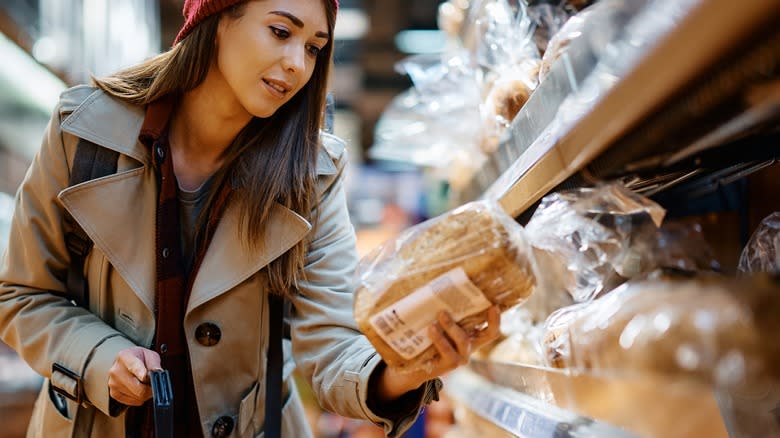
Bread buying is a mundane fact of life; it's something we all must do. And though there isn't anything particularly interesting about the process, you may be surprised to know that there are several aspects of bread buying that are actually quite fascinating. Some may even give you a health boost — once you've cracked the code, that is.
We aren't saying that learning the secrets of store-bought bread will make you jump for joy the next time you find yourself in the bread aisle, but we can say that you'll be more than likely to embark on your bread–buying journey more informed. Equipped with information that could potentially enhance your bread purchasing process, you'll be one step closer to getting your hands on real, fresh, unadulterated loaves that could pack the potential to benefit your body immensely. Let's get ready to pan our way through the facts to help you get your hands on the bread you really crave, right here on American grocery store shelves.
Read more: 12 Little-Known Facts About Salt
Bread Tags Mean Something, But Not What You Might Think
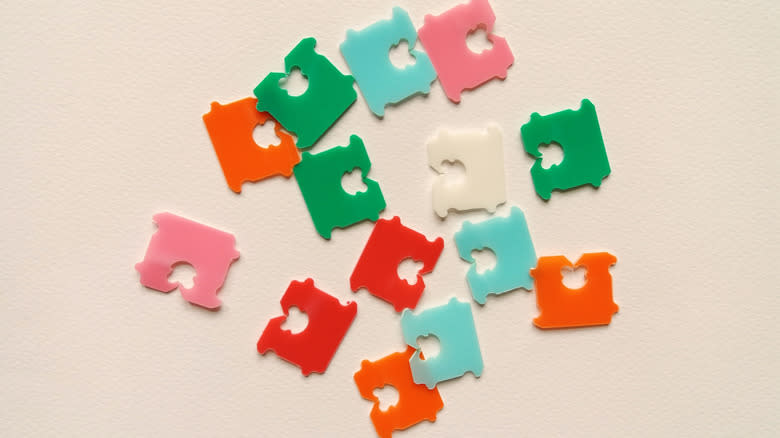
There's a belief out there that color-coded bread tags mean something, and indeed, they certainly do. While it may seem fun to memorize these bread codes for the sake of obtaining the "freshest" loaf on the shelf, there are a few things you'll want to keep in mind before skipping away with those fresh slices scot-free.
First and foremost, it is important to recognize that there isn't necessarily an industry "standard" when it comes to how bread tags are color coordinated. The belief that one color represents one day of the week may be true for some brands, but for others, it may mean something totally different.
This leads us to our next point. Certain colored bread tags may signify which day of the week the bread was baked, but could also serve as an indicator for when workers should remove the bread from shelves. Since older bread loaves are often taken away before new deliveries, manufacturers use color-coded tags to help employees know which breads to keep and which to ditch. Thus, while bread tag colors certainly do mean something, it may not always be quite what you think.
Relax ... Most Bread Does Not Contain High Fructose Corn Syrup
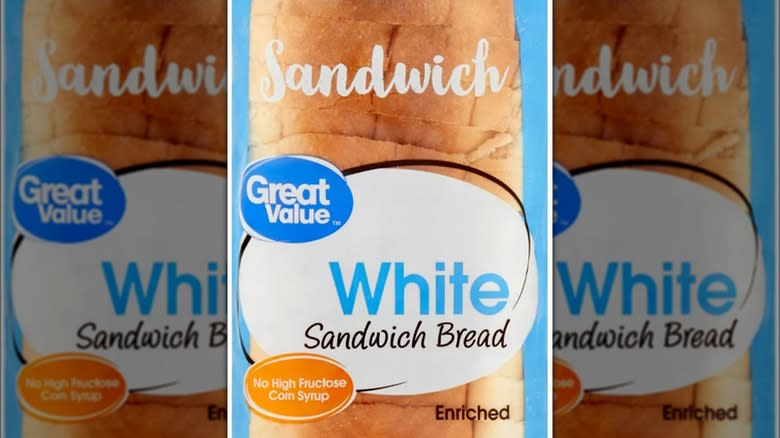
Okay, we might get a little flak here as we're sure some of you could potentially find at least one brand out there that puts high fructose corn syrup in its bread. Even so, the majority of bread in America these days doesn't contain this sweetener mostly due to lower demand for the additive, which is likely related to its health risks.
High fructose corn syrup is a syrup derived from corn that is used to sweeten items like drinks, processed goods, and, yes, sometimes bread. In times past, high fructose corn syrup was inexpensive when compared to normal sugar and fared well in acidic drinks. It also caused many drinks to taste better and helped to increase their longevity, making the use of high fructose corn syrup immensely popular.
These days, people are hip to the fact that high fructose corn syrup, like sugar, can wreak havoc on their health. Because of this, companies are scaling back on its use, often advertising their avoidance of the substance directly on the package. Even cheap Great Value white bread from Walmart contains no high fructose corn syrup. Thus, though high fructose corn syrup may still sneak its way into bread brands on some shelves, the vast majority of labels you find aren't likely to contain it. As always, thoroughly check the ingredients on the package to be sure.
More Expensive Doesn't Necessarily Mean Better
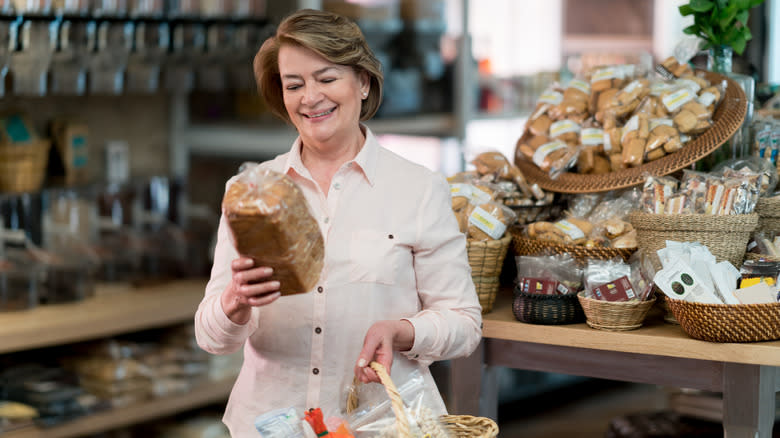
We know there are store-bought bread trademarks out there that far surpass generic brands, but it's very important to remember that a higher price tag doesn't necessarily mean a bread product will be better. There are some instances in which you'll find generic bread to contain fewer ingredients than some of the "fancier" brands with higher price tags.
For example, Kroger Enriched White Bread contains preservatives, dough conditioners (in the form of ammonium sulfate), soybean oil, and a few other ingredients. Though many of these additives aren't preferred, at a little over $1 a loaf (at the time of publication), we can't say we're too upset. Despite this fact, other brands, such as Black Bread Co. Premium White Bread contain similar ingredients, including the use of soy, preservatives, and dough conditioners, yet cost nearly $5 a loaf in our area. And while we agree that the taste of some more expensive brands may be better than the cheaper ones, if it's pure ingredients you seek, you should be very careful not to buy bread in accordance with its price tag. Instead, focus on reading the ingredients and learning the purpose those ingredients serve in order to determine which is the best bread for your household.
Fresh Bread May Not Mean What You Think It Does
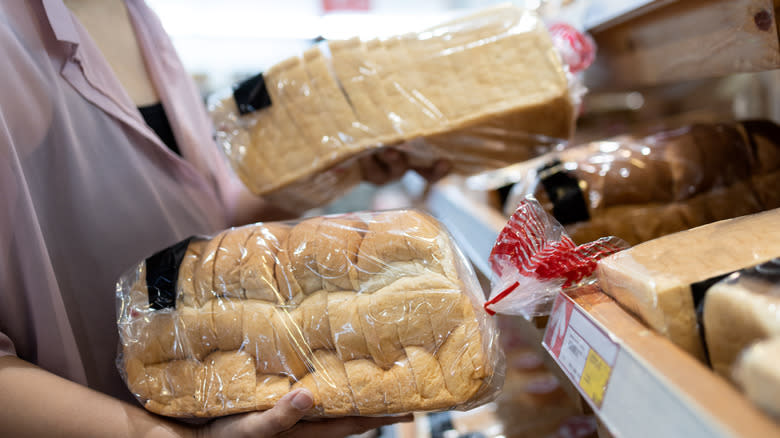
Bakery fresh, freshly baked bread, "freshness guaranteed" ... what does it all really mean? If you're after bread made in a bakery, that's one thing. But if you want true, unadulterated bread that contains little to no additives and preservatives, well, you might just get duped at the supermarket.
At this point, you may wonder what on earth we're talking about. Most grocery stores today sell "fresh baked" bread in the form of a baguette or loaf, and no, you aren't talking about the pre-sliced kind you find on the shelf. Yup, we know this, too. But despite your preconceived notions, it's important to bear in mind that "real" fresh-baked bread, like the baguettes sold in France, is made with minimal ingredients. No preservatives, no dough conditioners — nothing except good ole flour, salt, yeast, and water. Actually, France has a law known as "Le Décret Pain" requiring that all French baguettes contain these ingredients: no more, no less.
Taking a peek at American "baguettes" sold in-store, we see that Walmart and Kroger have at least one preservative or dough conditioner ingredient somewhere in the mix. Frankly, we struggle to see how any of these "bakery fresh" breads are any better than the pre-sliced varieties that offer the same ingredients and, sometimes, maybe even less than the bakery fresh options. Take it for what you will, but in our opinion, most grocery store-sold bread isn't quite worth the buy.
Sourdough Bread Has Several Advantages Over Other Bread Types
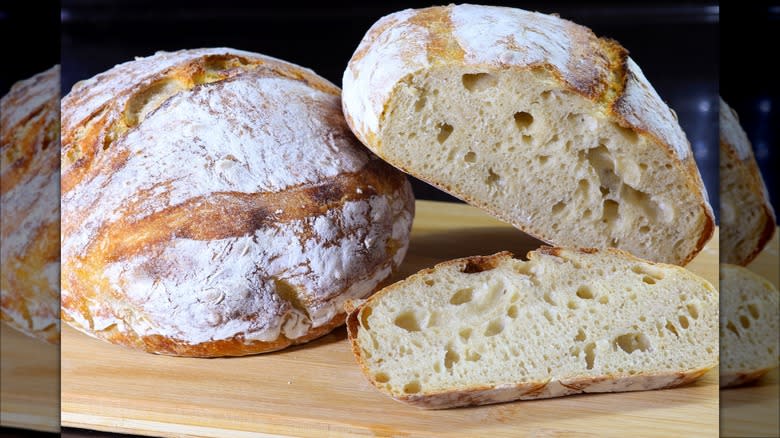
While it may seem as though sourdough bread is merely another white bread variety, the truth is that sourdough can have many advantages over the store-bought white and wheat types you typically find lining grocery store shelves. Sourdough bread undergoes a slow fermentation process that allows it to break down a lot of the gluten in the bread, while also making nutrients within the bread more easily absorbed by the body. This leads to easier digestion of sourdough and, interestingly, can even sometimes be tolerated by people with gluten sensitivities. Just remember that it isn't totally gluten-free, so those with celiac disease should still exercise caution when consuming sourdough bread (via Healthline).
Is this to say that sourdough bread is without flaw? Not quite. Though this type of bread is certainly a worthy pick-up, some types on the market may be made differently than others. Take a look at the ingredients and any claims the company makes for a better assessment of whether or not the sourdough bread is legit. Brands that give you a specific amount of time in which the bread was fermented, along with a list of minimal ingredients can be good clues that the in-store sourdough bread you're buying is indeed deserving of your dime.
In A Bind? It May Be Best To Buy, Then Freeze
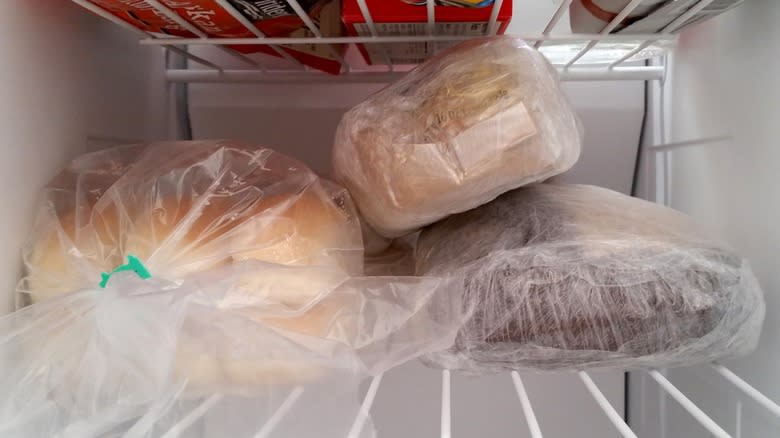
We all want to save money whenever we can. If you aren't too picky about bread brands and really want to stretch your dollar, you may wish to give freezing your bread a try. Now, this may not be a novel idea to some of you, and for that, we apologize. But in case you aren't aware, it's totally plausible (and smart) to buy several loaves of bread on sale, use what you need, and freeze the rest.
Most loaves will do just fine if you throw them as is in the freezer, but if you want to unbag them, wrap them in foil, and place them in a freezer-specific bag to prevent frostbite, that's great, too. This can be especially helpful if you want to retract a single slice one at a time, rather than needing to thaw the whole loaf. If you do plan to eat your entire frozen bread loaf, simply remove it from the freezer, and let it defrost before consuming.
Want to refrigerate your bread instead? We don't recommend it. Although it may sound like a viable way to preserve your bread, the cool air from the fridge will actually draw moisture out of it, causing it to go stale faster. Thus, if you want to save by buying discounted loaves in bulk, you'll need to freeze the bread to help it keep; doing anything otherwise may leave you with money wasted.
All Wheat Bread Isn't The Same
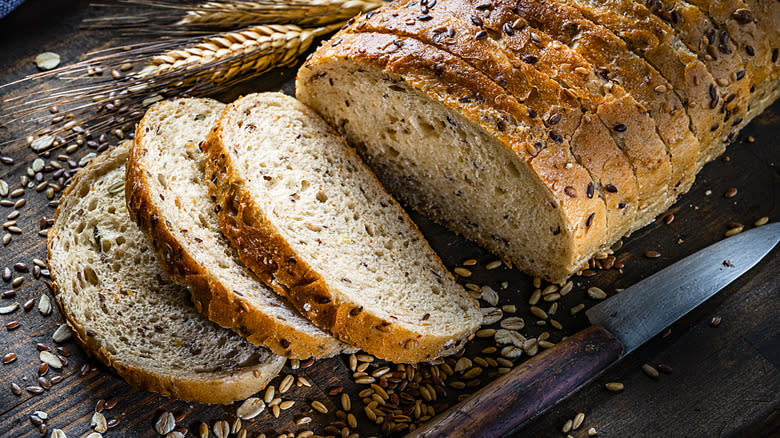
When it comes to wheat bread, it is extremely important that you pay attention to the wording on the package. Outside of scanning the nutrition label for general facts and potential additives, you also should pay special attention to the phrases used on the bread package to know what kind of bread you're dealing with.
The first kind of wheat bread you may encounter is the sort that is listed as simply that: wheat bread. Bread that is labeled simply as "wheat" bread is only indicating that the bread is made of wheat flour. This type of bread may also contain refined white flour, which may or may not suit your preference.
Two other kinds of wheat bread include "whole wheat" and "whole grain" varieties. Whole wheat varieties include the entirety of the wheat kernel in the production of the bread. This kind of bread is very wholesome and nutritious. The latter "whole grain" variety also features the whole wheat grain but may also contain other types of grains, including brown rice, whole oats, whole barley, and more. Brownberry's Whole Grains 12 Grains and Seeds bread is a great example of this. As a rule of thumb, the word "whole" is a good indicator that you're on the right track when it comes to snagging a truly wholesome bread. Interesting, right?
... And Neither Is All White Bread
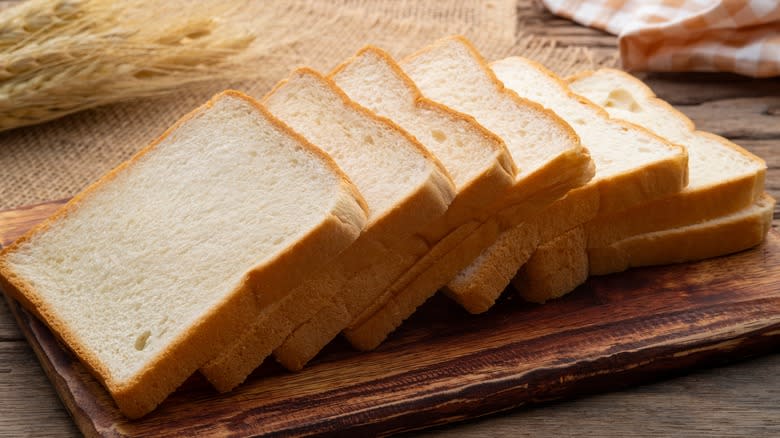
We won't pretend that white bread varieties get as confusing as wheat bread types, but it's important to note that not all white bread is the same. To the untrained eye, almost any white bread seems nearly identical to the other, whether it's an Italian loaf, a baguette, sourdough, or sliced white. Sure, they all may look different, but each has that similar fluffy white interior that would designate it as "white" bread. Or ... does it?
One thing we know for sure is that all white bread is not created equally. Some brands, like Dave's Killer White Bread Done Right, contain multiple grains that you'd be hard-pressed to find in other white bread types. Other breads, such as Pepperidge Farm Hearty White, on the other hand, may contain controversial dough conditioners (like DATEM), and may also contain preservatives and other additives that you may not wish to see infused in your daily slice. Other bread types, including Italian loaves, French bread, sourdough, Texas toast, and other white bread varieties also exist, so be sure to do your homework before assuming all white bread is the same; in most cases, they definitely are not!
Don't Forget About The Benefits Of Consuming Store-Bought Sprouted Grains
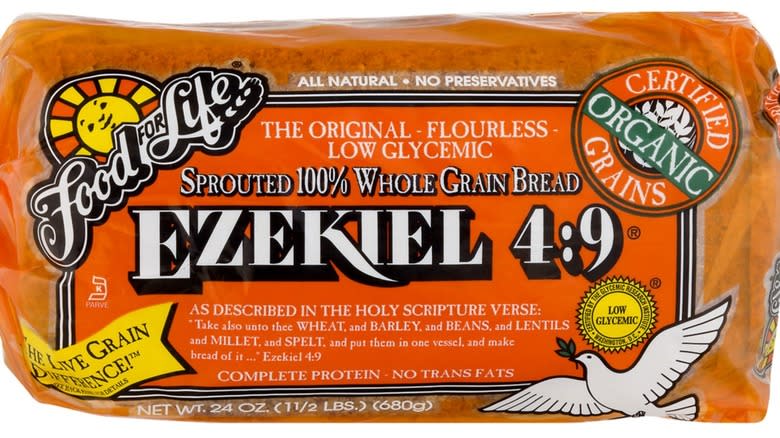
Ezekiel bread may seem like another fad, but in reality, sprouted whole grains are some of the best types of bread you can eat. The reason for this includes reasons already cited in why whole grain bread varieties tend to be better, but sprouted grain bread takes those benefits one step further.
The grains that are in sprouted bread, specifically Ezekiel bread, tend to yield more nutrients as they sprout. The sprouting process has been shown to increase the amount of protein, folate, fiber, vitamin C, and other beneficial nutrients in the grain, thus making it an overall healthier choice than even some of your store-bought whole grain varieties out there.
Bear in mind also that many sprouted varieties contain grains other than wheat, much like whole grain varieties. This means you'll get the added benefit of lentils, barley, spelt, and millet, not commonly found in your everyday average store-bought loaf. These are just a few of the ways sprouted grains may be worth your time; just know that the taste may take time to get used to if you decide to give this bread a try.
The Oldest Bread Is Usually In The Front
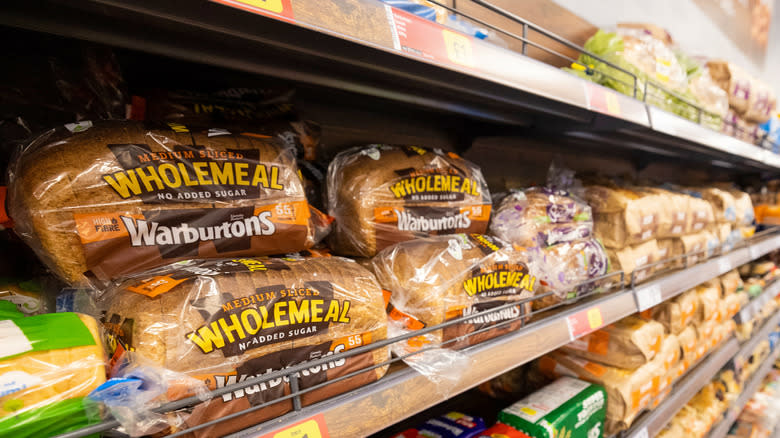
Did you know that there's often a method to the madness when it comes to how bread is stocked? It's true. Actually, some workers plead with customers not to do what would essentially be in their best interest because it messes with their system. So, what system is it that some companies are working hard to protect? The oldest to newest bread order, of course.
In case you've never noticed, some markets intentionally place the oldest bread in the front so that it will be grabbed first. In most cases, companies do this simply because they don't want to see bread go to waste. Still, it also may not be in your best interest to grab bread that will expire in 1-3 days. Thus, grabbing the freshest bread possible totally makes sense for you, too, right? We think so.
Hey, do what you want, but just so you know, the freshest bread is usually further back. If it truly bothers you to buy the freshest bread, then by all means, go ahead and buy the one that will go rancid in a few days. Buying older bread can prove helpful if you plan to eat it right away or freeze it for later. Grocery store employees will also thank you for it!
Watch Out For Gluten Free And Keto Varieties
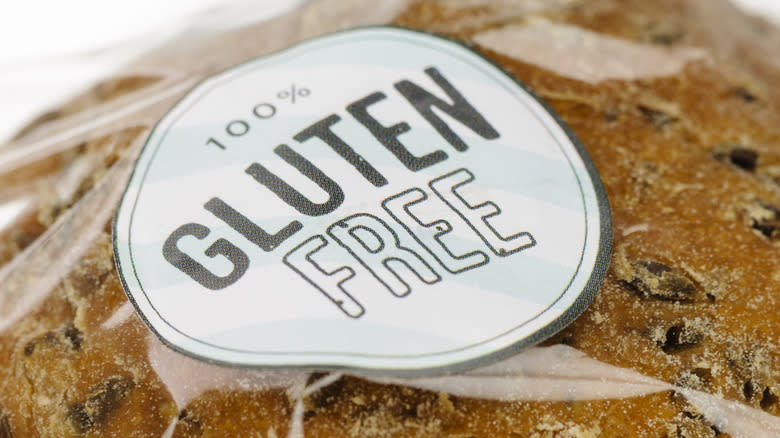
Gluten-free and keto varieties may seem healthier at first glance, but whether or not they are actually all they're cracked up to be will depend on what you consider "healthy." This is more than just semantics here — it really is an assessment of your dietary needs and overall concerns when it comes to the ingredients in your bread.
For example, some people with celiac disease or gluten sensitivities will flock to gluten-free bread for good reason. People with celiac disease aren't able to digest gluten properly; thus, the healthiest option for them is to select a bread that doesn't contain it. The same is true for people following a low-carb diet. What's most beneficial for them is likely to be whatever has the lowest carb count for their specific dietary need.
The key here is to note the reason for which you are buying keto or gluten-free bread. If you are buying these bread varieties simply because they seem healthier, you may wish to reconsider. Many gluten-free and keto varieties still contain additives like preservatives and dough conditioners, just as other bread types do. Oh, just in case you're wondering, keto and gluten-free varieties aren't necessarily the same. Many keto brands contain gluten, and many gluten-free brands are (very) high in carbs. Now you know!
Read the original article on Mashed.

